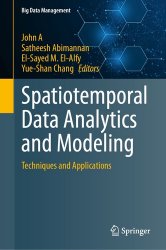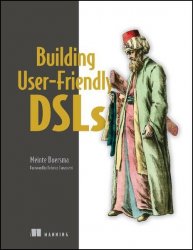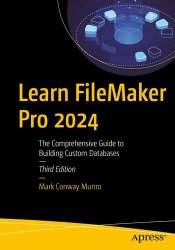 Название: Spatiotemporal Data Analytics and Modeling: Techniques and Applications
Название: Spatiotemporal Data Analytics and Modeling: Techniques and ApplicationsАвтор: John A, Satheesh Abimannan, El-Sayed M. El-Alfy
Издательство: Springer
Серия: Big Data Management
Год: 2024
Страниц: 253
Язык: английский
Формат: pdf (true), epub
Размер: 18.9 MB
With the growing advances in technology and transformation to digital services, the world is becoming more connected and more complex. Huge heterogeneous data are generated at rapid speed from various types of sensors. Augmented with Artificial Intelligence and Machine Learning and Internet of Things, latent relations, and new insights can be captured helping in optimizing plans and resource utilization, improving infrastructure, and enhancing quality of services.
A “spatial data management system” is a way to take care of data that has something to do with space. This could include data such as maps, satellite images, and GPS data. A temporal data management system is a system designed to manage data that has a temporal component. This could include data such as weather data, financial data, and social media data. Some advanced techniques used in spatial and temporal data management systems include geospatial indexing for efficient querying and retrieval of location-based data, time-series analysis for understanding and predicting temporal patterns in datasets like weather or financial trends, machine learning algorithms for uncovering hidden patterns and correlations in large and complex datasets, and integration with Internet of Things (IoT) technologies for real-time data collection and analysis. These techniques, augmented with Artificial Intelligence, enable the extraction of latent relations and insights, thereby optimizing plans, improving infrastructure, and enhancing the quality of services.
There are a few reasons for the recent trends in spatial and temporal database management systems. One reason is the increasing amount of data that is being collected that has a spatial or temporal component to it. This data can be used to help answer questions about how things change over time or how they are related to each other geographically. Another reason is the increasing use of mobile devices and applications that need to be able to track location and time. Finally, there is a need for more efficient ways to manage and analyze this data. For instance, spatial data can be used to map the spread of disease, while temporal data can be used to track the number of cases of the disease over time. Both types of data can be combined to create a more accurate picture of the situation. A “spatial data management system” is a way to take care of data that has something to do with space. This could include data such as maps, satellite images, and GPS data. A temporal data management system (DBMS) is a system designed to manage data that has a temporal component. This could include data such as weather data, financial data, and social media data. Some common techniques used in spatial and temporal data management systems include Data compression, Data de-duplication, Data indexing, Data mining, Data warehousing, etc.
Machine Learning is used in several tasks to manage spatial and temporal databases, such as cleaning data, extracting features, and data clustering. Thus, in current scenarios, diverse intelligence models are needed to manage spatial, temporal, and moving object data. The management of spatiotemporal and moving object data models, aided by Artificial Intelligence, Machine Learning, and Deep Learning techniques, can automatically handle data attributes, operations, and query requirements. This book will discuss Deep Learning and Machine Learning techniques in depth. Most books on the market focus on mathematical models such as the probabilistic model, the fuzzy model, and others. Using Machine Learning and Deep Learning algorithms to analyze spatiotemporal data is necessary at present. However, this book’s main objective is to encourage researchers and practitioners to share their knowledge and to incorporate recent technologies from industry and academia. The authors are expected to present their technical expertise and compare it with existing methodologies and real-time scenarios.
This book provides essential technical knowledge, best practices, and case studies on the state-of-the-art techniques of Artificial Intelligence and Machine Learning for spatiotemporal data analysis and modeling. The book is composed of several chapters written by experts in their fields and focusing on several applications including recommendation systems, Big Data analytics, supply chains and e-commerce, energy consumption and demand forecasting,and traffic and environmental monitoring. It can be used as academic reference at graduate level or by professionals in science and engineering related fields such as Data Science and engineering, Big Data analytics and mining, Artificial Intelligence, Machine Learning and Deep Learning, cloud computing, and Internet of Things.
Скачать Spatiotemporal Data Analytics and Modeling: Techniques and Applications
[related-news] [/related-news]
Комментарии 0
Комментариев пока нет. Стань первым!















